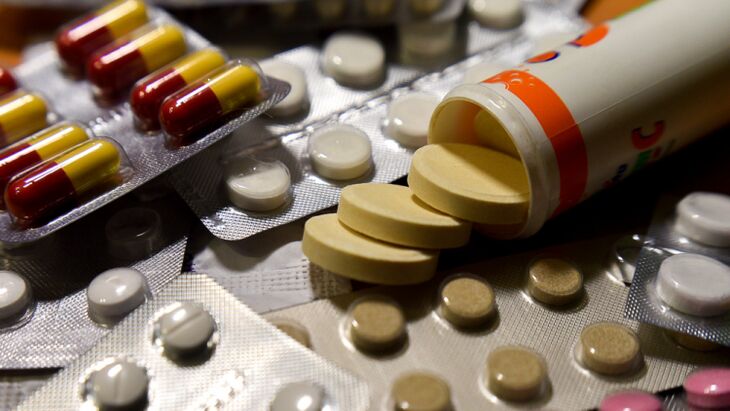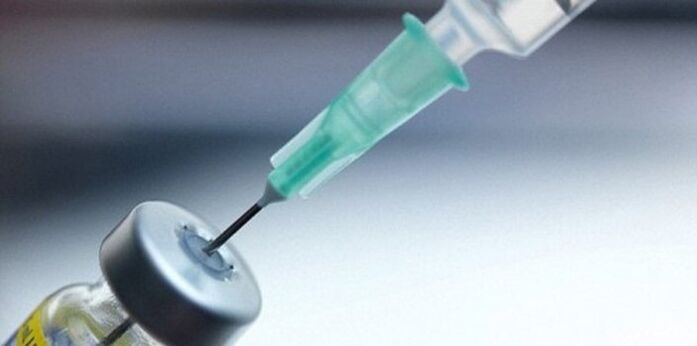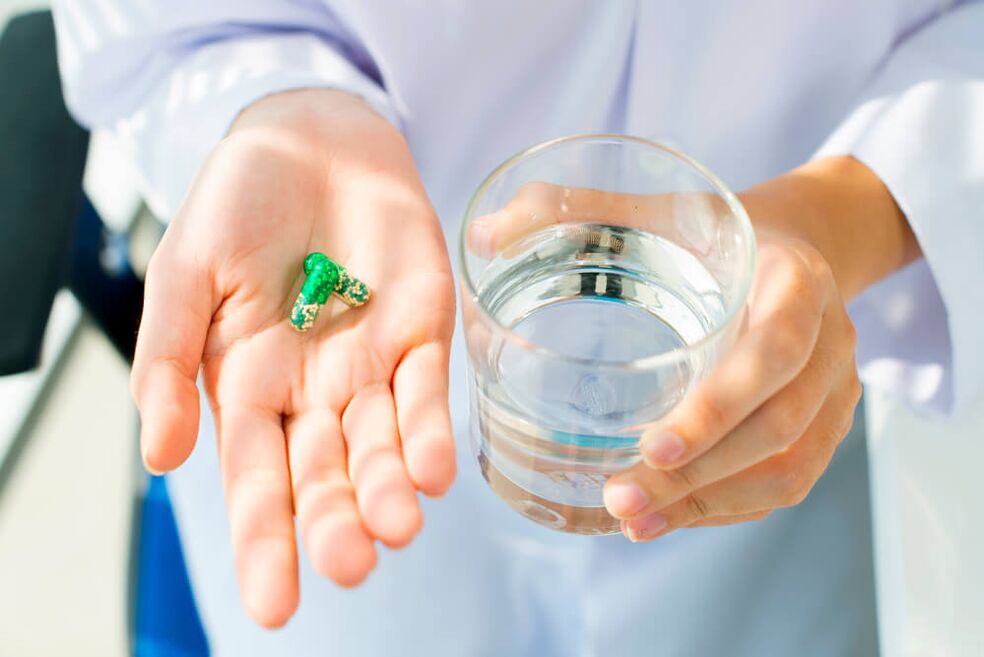Prostatitis is a fairly common male disease.
It can be infectious or non-infectious, the first form is divided into bacterial and non-bacterial.
Treatment of prostatitis with antibiotics is done with an infectious bacterial lesion of the gland, even if the symptoms are not too pronounced.
They are sometimes prescribed as test therapy for non-bacterial forms.

Antimicrobials actively affect the pathogen microflora, kill inflammatory pathogens, and broad-spectrum antibiotics also become preventive of complications affecting the urinary system.
Classification of antibiotics in prostatitis
In acute or chronic inflammation, the doctor selects a drug from one or more groups of antibiotics to which the microbes are sensitive. This is determined by the results of the analyzes.
Each antibacterial agent can be divided into the following groups:
- penicillin;
- tetracycline;
- aminoglycoside;
- cefolosporin;
- fluoroquinolone;
- macrolides.

Penicillin group
Drugs in which the main substance is penicillin are broad-spectrum antibacterial agents.
In this case, the material may be of natural or synthetic origin. The advantage of this group of drugs is the affordable price and the use of the tablet (or suspension) at home.
The most common of a wide list of penicillin antibiotics is penicillin of the same name, which is most commonly prescribed for chronic inflammation.
Group of tetracyclines
Tetracycline, as an antibiotic against prostatitis, can be prescribed for external use in the form of an ointment or tablet for oral administration.
The substance effectively kills streptococci, staphylococci, salmonella, chlamydia, shigella and a large group of other microbes while being rapidly absorbed into prostate tissue.
Recently, tetracycline drugs have become less and less used in urology due to the large number of side effects (especially from the gastrointestinal tract).
Disadvantages of the drugs include the development of resistance of microorganisms to tetracyclines, as well as a number of side effects:
- intestinal colic;
- nausea;
- indigestion;
- anemia;
- eosinophilia;
- increased intracranial pressure;
- liver damage;
- allergy.
Aminoglycoside group
The drugs have long been used to treat prostatitis as antibiotics in men with a variety of effects. However, these drugs are very toxic.
The most common use of the drug, which is extremely effective in combating gram-negative pathogens of bacterial inflammation, which include Pseudomonas, Proteus, Klebsiella, Salmonella, Enterobacteriaceae.
They are inexpensive and quickly absorbed into the bloodstream - reaching peak plasma concentrations one hour after ingestion.
Disadvantages of the funds:
- Limited spectrum of action - only used as an adjunct to combat certain pathogenic microorganisms in the complex therapy of prostatitis.
- It can cause many side effects, including: headache, kidney failure, vomiting, nausea, hearing loss, anemia, leukopenia, drowsiness, oliguria (decrease in the amount of urine excreted compared to normal), and so on.
- The drug is not sold orally - the injection is given by bypassing the gastrointestinal tract by injection and injection.
Group of cephalosporins
These antibacterial agents are also not administered orally but parenterally. It is often prescribed to inpatients.
The funds act on gram-positive pathogens, a small group of anaerobes and gram-negative bacteria.
Funds are often prescribed to combat complicated prostatitis caused by E. coli, enterobacteria, gonococcus, staphylococcus, Proteus, Klebsiella, and other pathogens.
Doctors turn to these funds if the infection cannot be overcome with penicillins, tetracyclines, and other antibiotics.
Additional benefits of medications include acceptable cost and minimal contraindications (with the exception of hypersensitivity to this type of antibiotic).
Like all antibacterial agents, cephalosporins cause side effects:
- headache;
- allergic skin rash and local reactions at the injection site;
- intestinal and gastric disorders;
- colitis and others.
Fluoroquinol group
These drugs are used in the complex therapy of chronic inflammation of the prostate because they penetrate rapidly into the tissues of the gland and have a long-term effect.
It is advisable to drink them if the disease is caused by mycobacteria, gram-positive and gram-negative microorganisms, chlamydia or mycoplasma.
In addition to the vomiting, nausea, and diarrhea associated with antibiotics, side effects include ICP, tachycardia, fatigue, leukopenia, anemia, and impaired renal function.
Important!Medicines cannot be combined with certain medicines. For example, with adenosergic drugs, the combination of which dramatically lowers blood pressure. It is not recommended to take the medication with non-steroidal anti-inflammatory drugs, as the combination of these increases the negative effect on the nervous system.
Macrolide group
It is sometimes used to treat prostatitis caused by chlamydia or mycoplasma. However, their efficacy has not been confirmed for other potential pathogens.
Treatment order
The antibacterial agents to be taken will be determined by the physician after tests have been performed to determine the type of pathogen and its susceptibility to drugs.
Antibiotics are only part of the treatment of acute and chronic infectious prostatitis, which includes a complete list of complementary medications.
The standard therapeutic system includes:
- Antibacterial drugs - to destroy the source of inflammation.
- Stimulators of blood circulation - to rule out stagnation of blood in the small pelvis.
- Anti-inflammatory drugs - to relieve swelling and pain.
- Immune modulators - to maintain and activate the body's defense system;
- Sedatives;
- Vitamins and trace elements (zinc, magnesium, selenium, vitamins A, B, C, E);
- Herbal infusions and teas (elderberry, cranberry, St. John's wort, comfrey);
- Exercise and prostate massage - to stimulate blood circulation and reduce congestion.

Acute inflammation
In acute form, both home therapy under the supervision of a physician and inpatient treatment are possible.
In this case, drugs are prescribed that have a comprehensive and wide-ranging effect: first, they resort to potent drugs from the list of cephalosporins and switch to fluoroquinols with developments.
Sometimes it is advisable to take two types of antibiotics at the same time for the fastest possible recovery.
In acute inflammation, the reaction to drugs manifests itself fairly quickly - the symptoms go away within a few days.
But even with the condition alleviating, you cannot interrupt the course or change the dose prescribed by your urologist. This can lead to the transition of the disease to a chronic form and the development of bacterial resistance to drugs.
If done correctly, prostatitis will heal 100% without complications.
Chronic process
Compared to the acute form, the treatment of slow inflammation with periodic exacerbations is more complex and longer. This is due to changes in the tissues of the prostate that are less sensitive to and "retain" the antibacterial drugs in the cells.
However, in the chronic course, the antibiotics of the following groups are most effective:
- cephalosporins;
- fluoroquinolones;
- macrolides.
The duration of therapy is at least one month, but this is usually not enough, so your doctor will prescribe several courses at equal intervals. It’s important to follow these guidelines, even if they improve: the feeling can be deceptive and only exacerbate the problem.
Conclusion
When symptoms of prostatitis appear, don’t waste time looking for solutions on forums and topic pages. It is important to see a doctor before the disease gets worse and the complications have serious consequences for men’s health.
























